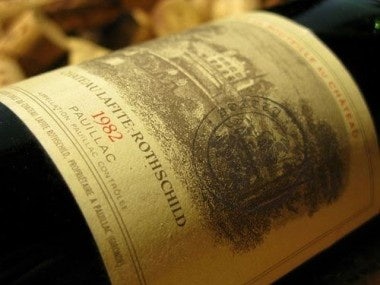French Wine Giant Teaming Up With CITIC For Penglai Vineyard#

With China's taste for imported wine increasing by the year, and the country's thirst for French wine in particular making it the world's top importer of Bordeaux in 2010, in recent years the likes of LVMH and Les Domaines Barons de Rothschild have turned their attention to developing land within China to produce wine made in China, for China. After announcing plans to develop a vineyard in Shandong province back in 2008, finally Domaines Barons de Rothschild, the parent company of Chateau Lafite, has broken ground on its Chinese winery in Penglai, working alongside local partner CITIC. As CRI reports this week:
With an initial investment of 100 million yuan (15.87 million U.S. dollars), the production base is designed to cover 26 mu (about 1.73 hectares) and will include a winery, a vineyard and other facilities, said Cong.
It is not yet known when the construction will be finished.
After visiting many regions in Asia over the past 15 years, Chateau Lafite technicians finally chose Penglai for its advantageous climate and geographical conditions, said Eric Kohler, Lafite's technical director.
Chinese interest in wine has risen sharply over the past few years, with the country currently standing as the world's fifth-largest wine consumer. In the first 11 months of 2011, China imported 1.27 billion dollars' worth of wine, up 88 percent year-on-year, according to customs data.
Though the timing of the Lafite/CITIC vineyard is interesting, considering Chinese demand for high-end Bordeaux seems to be cooling somewhat following a boom in 2009-2010, it's the idea of a global "brand" like Chateau Lafite producing a "made in China" product that is raising more eyebrows. But with rampant counterfeiting -- particularly for marquee labels like Lafite -- denting consumer confidence in top imported wines, and causing a knockdown effect on wine prices around the world, as Reuters notes this week, Les Domaines Barons de Rothschild may be doing the best thing for its China-based branding. As Reuters points out about the role of counterfeiting and consumer trends in the Chinese wine market:
The price of 2008 Lafite fell 45 percent from peak to trough in 2011, according to Liv-ex, with many pointing to a drop-off in Chinese demand.
"I think there's been concern about the integrity of some of those wines in the marketplace. You hear a lot of stories about the amount of ex-vintage of Chateau Lafite consumed in China is five times the annual total production," said [Ian Ford of Summergate Fine Wines in Shanghai].
...
But some see a positive effect on the real thing at auction houses, with bidders at Hong Kong auctions willing to pay a premium for guaranteed authenticity, Gearding said.
"It shows the problem which is associated in the Far East region with counterfeit bottles ... people are willing to pay so much over and above the market prices for what they consider to be perfect stock as it were," [Thomas Gearing of Cult Wines] said.
If people truly are willing to pay for proven authenticity -- a theory tested out by Moutai in 2010 with its "Red Diamond" baijiu -- a new "Chinese Lafite" could be the best thing for the Chateau Lafite brand in China, as it could go a ways in finally shoring up consumer confidence that has been badly hurt over the past few years. As Jing Daily has previously noted, a common joke in the China market is that more Chateau Lafite 1982 currently exists in China than was ever produced, with wine expert Frankie Zhao saying late last year, "I estimate that 70 percent of the so-called Chateau Lafite Rothschild sold in China’s mainland is fake since the sales volume greatly outstrips the import volume." Recent stories, which sound like the stuff of fiction, include offshore boats filling fake Lafite bottles with cheap bulk wine before "importing" it to China.
For Lafite to rebuild its name in China, and restore it to 2008 levels among the Chinese wine-drinking elite (while competing with top Burgundies like DRC), introducing new anti-counterfeiting measures on the Chinese-made wine it plans to produce in Shandong -- while mounting a sort of on- and offline "charm offensive" that focuses on the quality and authenticity of its Penglai wines -- could be a step in the right direction.
